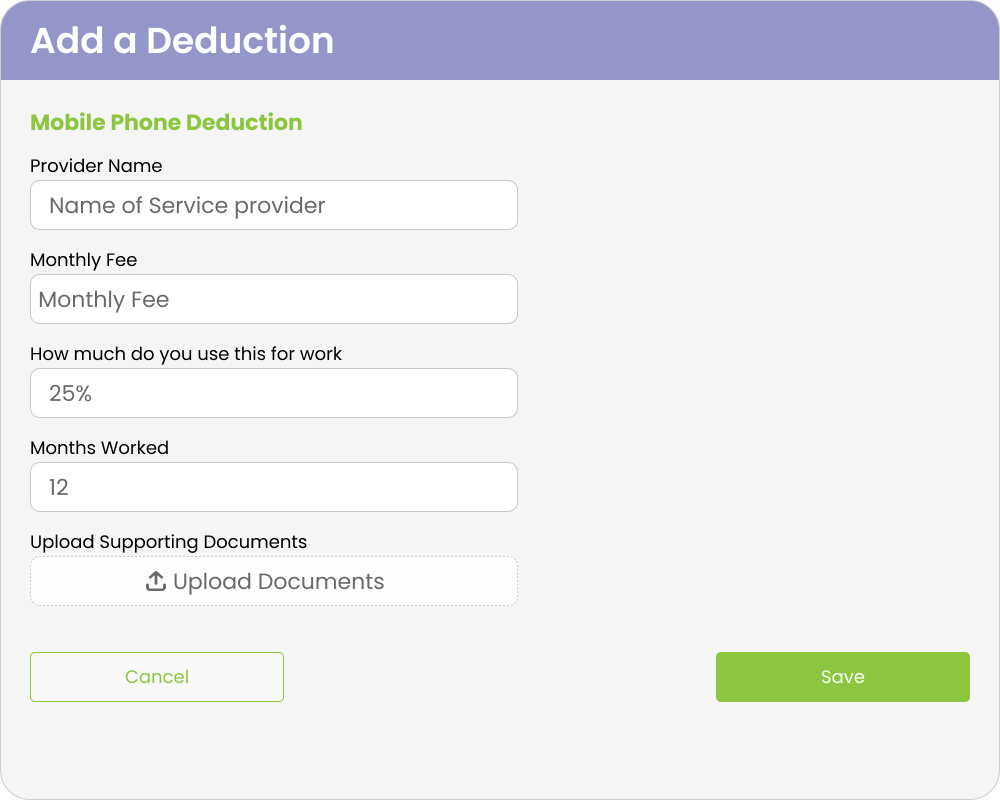Your phone and Internet service may be claimed for a deduction if you are using them for work purposes. The claim can be made under the conditions that you:
- Have records to support these claims
- Paid for these costs
When using your phone and Internet for both personal and work-related use, you will have to calculate a percentage that shows a reasonable relation to work use. The ATO has strict guidelines on what can and cannot be claimed, we are here to help you figure out if you can claim your expenses or now.
There are three key topics that you must know about when making a mobile phone, computer and Internet claims:
- Substantiating Your Claims
- Guidelines for Phone Deduction Claims
- How to Calculate Phone Work Use
Substantiating Your Claims
When claiming deductions that are greater than $50, well-maintained records will be needed for a representative period covering four weeks that is respective to each income year. These records can be in the form of bills, diary entries and electronic records. Evidence that shows your employer requires you to do some task from home, such as work-related phone calls or other types of work also help show that you will be allowed to make deduction claims.
When You Cannot Make a Deduction
Employer-provided phone: Phones to use for daily work are sometimes given to employees and the company is billed for the usage, i.e. phone calls, data, text messages, you will not be allowed to make a deduction claim. In a similar case, if your employer reimburses you even if you are required to pay for your usage, you still will not be allowed to make a deduction claim.
Incurred Costs Before Starting Work
Using a phone to look for a job does not allow you to make a deduction claim. The reason is that you have not begun to generate an income from your daily phone use.
Likewise, casual employees also cannot claim deductions if an employer calls and asks you to work or if you get in touch with them to check on the availability of work. The costs to do these activities are not considered as something that directly relates to producing income.
Instead, these tasks are viewed as activities that give you opportunities to earn income.
Once you are earning accessible income, you will then be allowed to make a deduction for a portion of your monthly phone use. It is ok to make a claim when your employer has a job requirement for you to use your phone directly for earning income.
There is an employees guide for calculating work expenses. This resourceful guide provides you with additional information on expenses that are considered capital or private. You will be able to understand which costs are disallowed, and which ones require allocation. Those that may need it include:
- Installation costs
- Joint usage expenses
- Line rental
- Among others
How to Apportion Your Phone for Work Use
Since there are several plans, packages, and bundles available when it comes to phones, you will have to use a reasonable basis to decide of your work use.
Incidental Use
For incidental work where there is no deduction claim of greater than $50 in total, the following criteria can be used to claim without having to go through all of your bills:
- $0.75 work-related calls from mobile phone
- $0.25 landline phone calls
- $0.10 SMS

Itemised Usage on Your Bills
For those who have itemised bills with a mobile phone carrier, you will have to calculate your percentage of work use that will be shown as your four-week representative period. You can then take these four weeks and apply it to the whole year.
To determine the percentage you should calculate using a reasonable basis, you can include:
- The amount of time used for making work calls to calculate a percentage
- Number of work calls as a percentage representation of total work calls
- Percentage of total downloads based on the amount of data used for work purposes
An example of working out a percentage is calculating the number of work calls that are listed on your itemised bill.
Example: Kelly has a $90 monthly mobile phone plan which includes $600 calling time and 2 GB of data. Every month, a monthly bill will come in showing an itemised list of all of her phone calls and shows her total usage for monthly data.
Kelly notices over four weeks that 30% of her calls are made while working. During the income year, she worked for 11 months, with one month of leave time that was spent not working. Kelly can make a $297 deduction claim when lodging her tax return (30% x $90 x 11 months).
Ways to Calculate Your Claim
Those who do not receive a monthly itemised phone bills can still determine their work use the old way: Keep a personal record of all of your calls made during four weeks. Although this way is a lot more tedious and you have to remember to do it daily, you can use a reasonable basis to come up with the proper claim calculation.
Example: David has a prepaid mobile plan that costs $60 a month. He does not get any form of a bill each month which happens with some plans. Instead, he uses a more technological approach to recordkeeping. He maintains a record of his calls over four weeks by taking screenshots of his call log each day. After reviewing his screenshots, he calculated that he makes 20 calls related to work and 80 calls are personal or private. He was actively employed for 11 months during the financial year and he spent one month taking a paid leave.
David took this information to figure out his work usage percentage as 20% – (20 work calls ÷ 100 total calls). He will make a deduction claim of $132 – (20% x $60 x 11 months).

Phone Carrier Plans and Services
Most phone carriers often bundle phone, high-speed wifi and other Internet services. For work-related use when including one or more of the bundled services, you will have to allocate these expenses based on the amount of work use for each included service. If your family members also use the same services, you will have to include their usage in the calculation as well.
For bundled plans, the four-week representative method should be used to come up with your work use for each service during the income year. Once this is identified, you will be able to figure out your specific pattern of work use which can then be applied to the whole income year.
Figuring out your work-related use can include:
- InternetCalculate the amount of data usage for work. Take note of this percentage of the total data that is consumed by everyone in your home. There are also additional expenses with Internet data which can affect this calculation. For example, if there is a monthly limit on the amount of data you can download monthly and you exceed it, it will result in additional costs.
- PhoneThis percentage can be derived by the number of work-related calls placed out of the total number of calls. You can also include the total amount of time used on work-related calls as a percentage of total calls. There are also additional costs that can be incurred due to work-related calls such as when you exceed your monthly cap on the number of talk minutes allotted monthly in your phone plan.
Example: Susan has a monthly plan where she pays $90 for a phone/Internet package bundle. The monthly bills show that the phone service in her monthly calls is $40 month and her wifi service is $60 a month. She brings in her cell phone plan of $90 monthly and gets a $10 monthly discount. She is required to pay $180 in total costs for all of the services.
She worked for 11 months and had one month of leave for the income year.
Based on her itemised account statement, Susan determines that she uses her mobile phone 20% of the time for work-related use. She also uses her Internet connection work purposes, and she determined that she uses 10% of her total Internet data for work. Also, her home phone is never used for work-related use.
Since the bundled package can be separated into its different components, she can calculate her work-related use by using the following:
Step 1 – Determine the value of each component
-
- Home phone: Susan does not have to determine home phone calls because her home phone is never used for work-related purposes
Internet: $60 a month
Mobile phone: $80 monthly ($90 monthly – $10 a month discount)
Step 2 – Determine work-related use
- Cell phone use: $80 monthly x 20% work-related use x 11 months = $176
- Home Internet use: $60 monthly x 10% work-related use x 11 months = $66
- For the income year, Susan claims a total of $242 on her tax return.
You may not have thought about it before, but you can receive a large return on your tax when you rightfully claim your home, mobile and internet expenses back. Contact TaxReturn.com.au, our portal can help you in this process, and our team of tax experts will help you achieve the best return possible and allow you to take the stress out of tax time.



